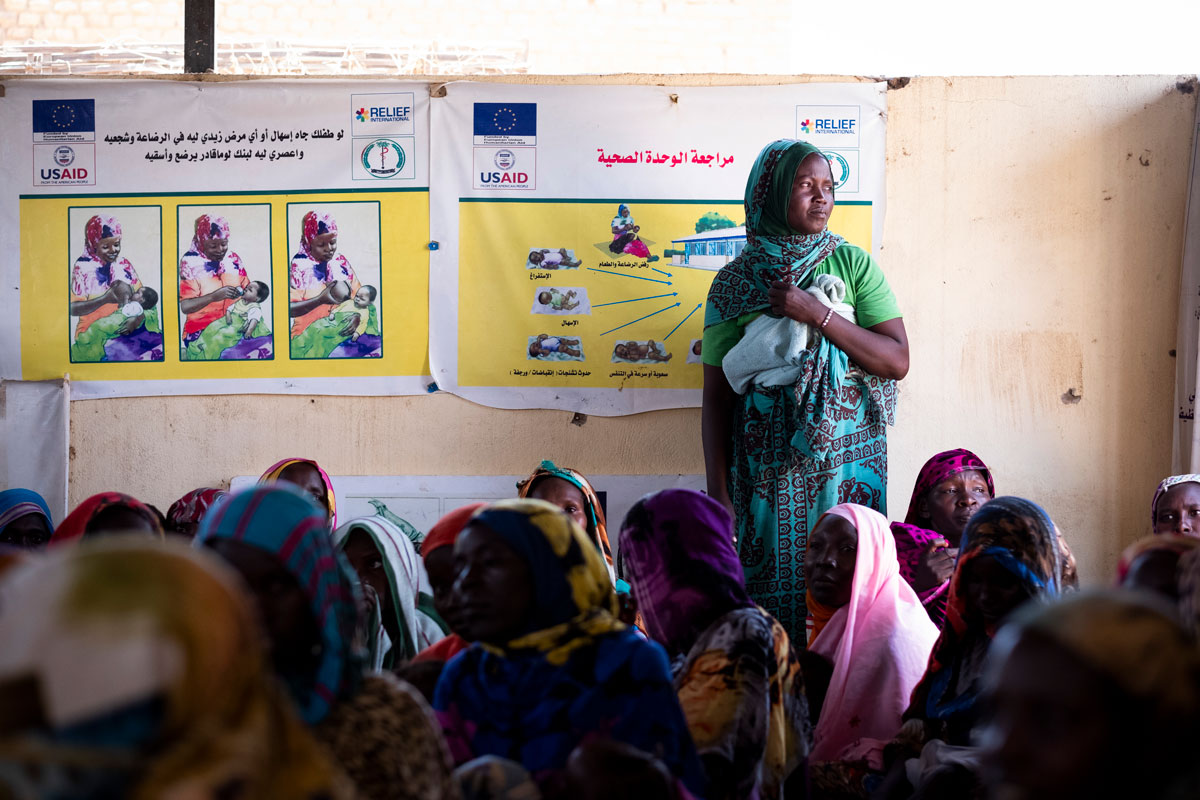“It’s shameful to see a child die of malnutrition,” shares Relief International’s Senior Nutrition Officer Rowida Hassan. “But I’m part of doing something about it.”
Rowida was 28 years old when fighting broke out in the Darfur region of Sudan in 2003. The conflict eventually displaced more than two million people, and many of them ended up just 8.5 miles south of her hometown of El Fasher.
Food shortages are a daily struggle for displaced Sudanese. Now, more than 15 years after the Darfur crisis began, Sudan has one of the highest rates of malnutrition in North Africa, with 2.47 million people suffering from acute malnutrition each year. Hunger haunts communities across the country, particularly in Sudan’s Zamzam camp for internally displaced persons (IDPs).
In the beginning: thousands flock to the outskirts of El Fasher
When the first wave of people arrived in 2003, Rowida distinctly remembers a few hundred structures hastily going up. They were made of stalks of sorghum, plastic tarpaulin, and grass mats. That cluster of a few hundred houses now comprises more than 200,000 households and forms the area known as Zamzam camp, which is divided into three areas labelled A, B and C.
Even before the conflict reshaped the demographics of her hometown, she remembers people struggling to find jobs. But, that year, there was much to be done in the health sector to serve the needs of IDPs. Rowida, who graduated with a degree in nutrition, joined Relief International in 2005 as a nutrition officer. Her job was to teach mothers how to prevent, identify, and treat cases of malnutrition.
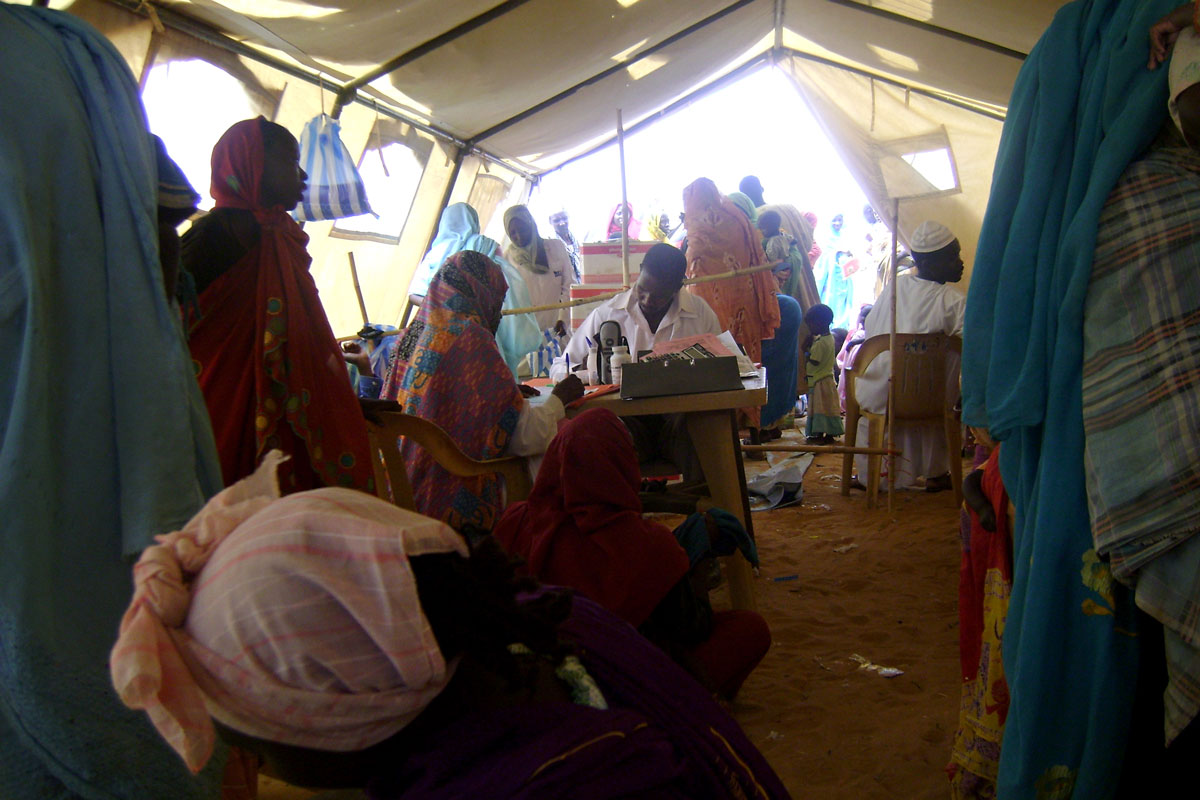
Relief International medical staff complete patient intake forms at our health clinic in Zamzam A at the height of the Darfur crisis.
© RI
“When these families fled their homes, they left everything behind, including their fields of sorghum and millet. Those crops used to provide them with the staples of their diets. When they arrived in Zamzam, they depended on food rations to survive, and malnutrition rates were high,” explains Rowida.
In the beginning, the work was difficult. The clinic operated out of makeshift open-air shelters and plastic tents. Medications stacked on plastic tables served as an impromptu pharmacy. Centers where the nutrition groups met were constructed of local materials and had to be rebuilt two times a year as the sun, wind and rain took their toll. And waves of people kept coming to the camp – in 2009, 2012, and most recently in 2016.
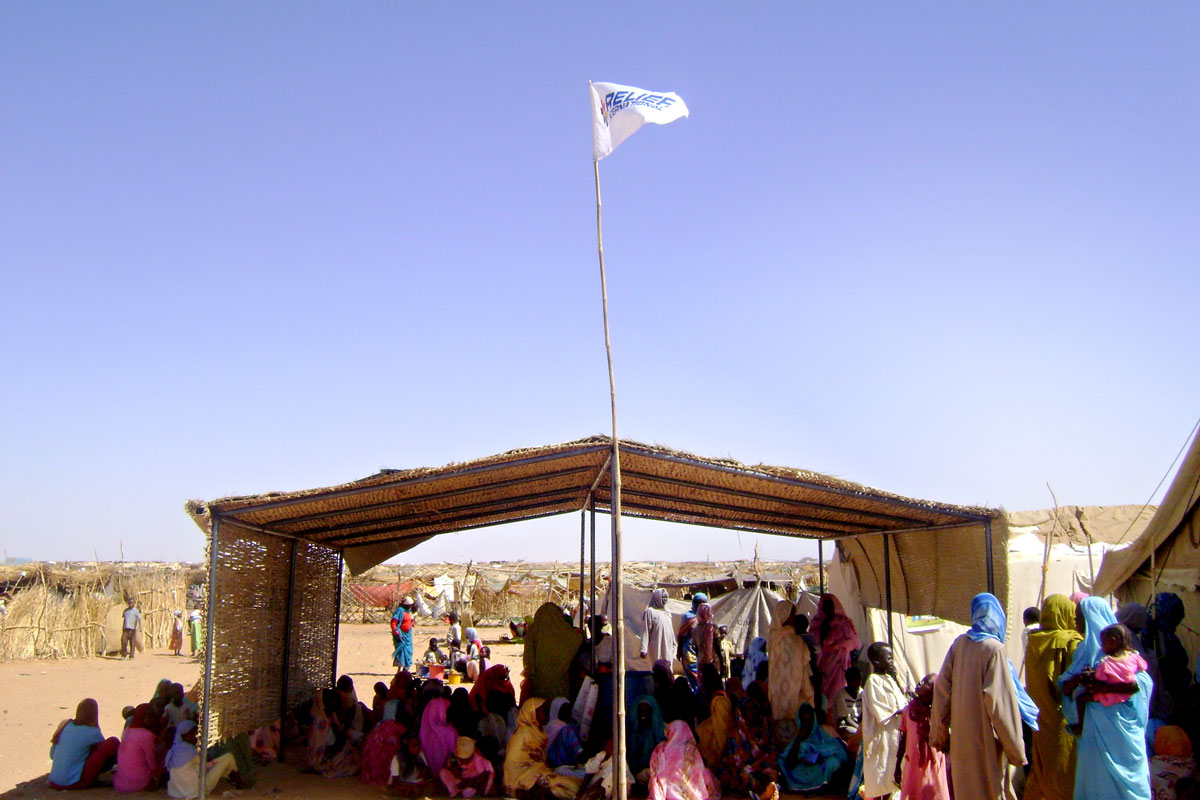
Relief International's first health clinic in Zamzam A, pictured here in 2006, serves 40,000 internally displaced people.
© RI
To better respond to the challenges and provide more stable services, in 2013 Relief International received permission from government officials to construct one of the camp’s first permanent structures: a stabilization center at our clinic in Zamzam A. Since then, several other health facilities have been built. Relief International now has 34 static and 11 outreach clinics in North Darfur, serving both the host communities and Zamzam residents. And change isn’t only being seen in the structures. Rowida has also witnessed a change in the health and behavior of people inside the camp.
15 years and counting: tens of thousands of people rely on Relief International for healthcare
When families first arrived to the area, now known as Zamzam camp, there were no health services available except in the neighboring city of El Fasher. But the cost of traveling into the city for treatment put healthcare out of reach for most families. Relief International began operating in Zamzam in 2006, and is now the sole provider of healthcare services inside the camp.
When Aziza, 24, found out she was pregnant with her fourth child, she stopped nursing her 18-month-old son, Adam. Shortly thereafter, his weight plummeted.
At the urging of Rowida and fellow community nutrition volunteers, Aziza walked for 30 minutes on foot to reach Relief International’s stabilization center in Zamzam A – her first time visiting the clinic.
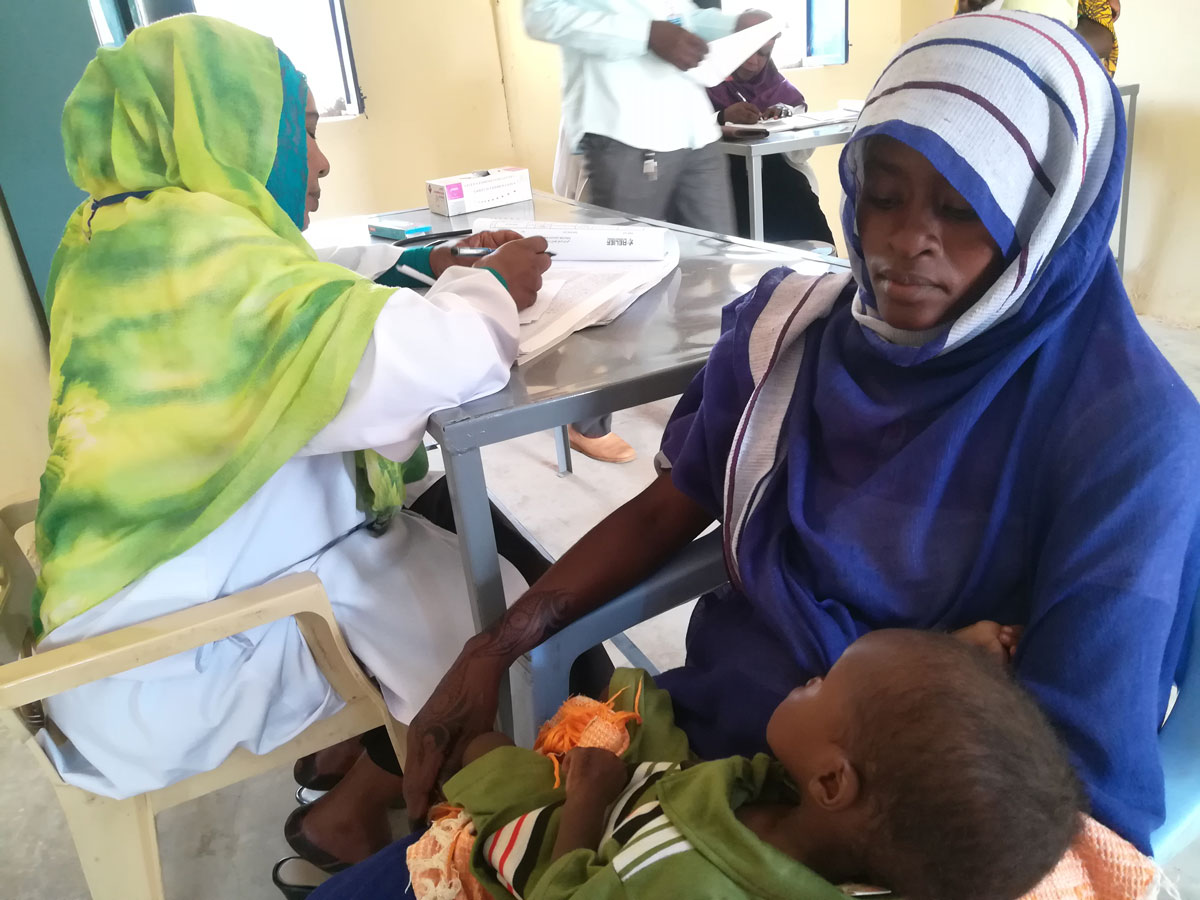
Aziza, 24, holds her young son, Adam, in her arms during his weekly checkup at Relief International's clinic in Zamzam A.
© RI
“From 2006 until now there are fewer cases of malnutrition because of our consistent services over the years. The mothers know where to come, and they trust us,” tells Rowida.
After further examination, Relief International’s medical team determined that Adam suffered from severe acute malnutrition. He weighed just over 12.5 pounds – half the normal size of a healthy 18-month-old.
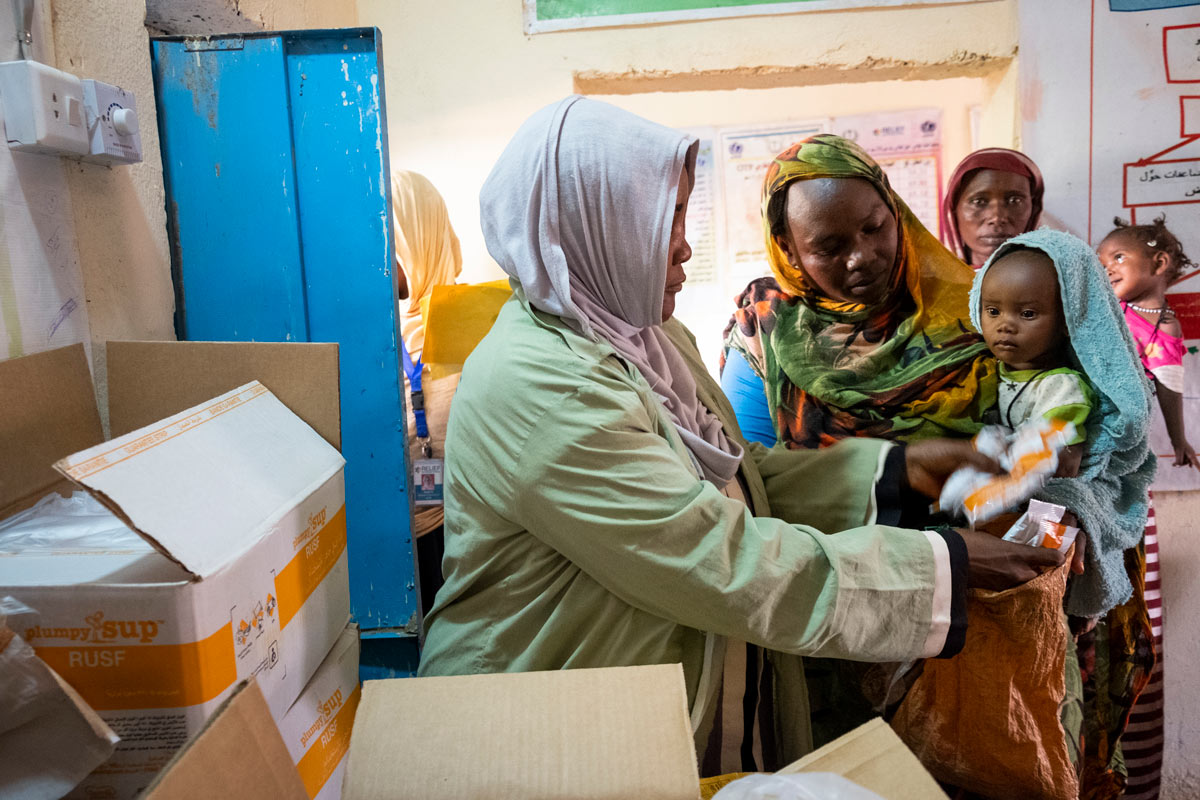
Women line up at Relief International's clinic in Zamzam A during a monthly distribution of Plumpy'Nut, a leading treatment for severe acute malnutrtion.
© RI
Our teams closely monitored Adam’s weight while he received a 60-day supply of Plumpy’Nut, a peanut-based paste that scientists have found to be the most effective way to treat severe acute malnutrition in children. Inspired by the popular Nutella spread, Plumpy’Nut treatments can be administered at home by eating the contents of the red and white packet once a day, removing the need for hospitalization.
Within a few weeks, Adam gained nearly 5 pounds, resulting in a noticeable fullness in his face. “This support saved my son’s life,” said Aziza.
Recovery is possible
Adam and Aziza’s story is just one of hundreds of cases that Rowida can recall. Over the past decade, she has treated a large number of malnutrition cases, which are a direct result of conditions in the camp.
Despite ongoing conflict, poverty and under-development, life here has found a rhythm. This year, Rowida was promoted to nutrition manager. Whether all of Zamzam’s residents return home tomorrow or not, she says her focus remains unchanged. She does not distinguish between helping her own family, others in her hometown of El Fasher, or those displaced to Zamzam camp. Her goal is to provide the best care possible to anyone who shows up at the clinic because good health is what saves lives – no matter who or where you are. “This is my community. We are all Sudanese,” says Rowida. “We need to help each other.”
